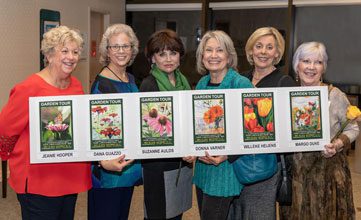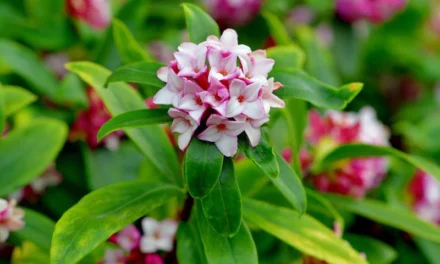 Folk medicine and herbal teas have always fascinated me, so when I was asked recently to do a program for the Hilton Head Herb Society I got out my pocket guides and clippers. Our yards and gardens are veritable pharmacopoeia and whether a plant is grown intentionally or branded a “pesky weed” we are very lucky to have so much regional diversity of plants. Many of them are useful on their own for teas, salves, cordials, and others attract birds and insect pollinators. Here are a few of the locals.
Folk medicine and herbal teas have always fascinated me, so when I was asked recently to do a program for the Hilton Head Herb Society I got out my pocket guides and clippers. Our yards and gardens are veritable pharmacopoeia and whether a plant is grown intentionally or branded a “pesky weed” we are very lucky to have so much regional diversity of plants. Many of them are useful on their own for teas, salves, cordials, and others attract birds and insect pollinators. Here are a few of the locals.
Teas have customarily been brewed and infused by many cultures and religions. Many plant parts can be used to make tea. Our local “sweet tea” comes from the tender new leaves of a Chinese plant called the tea plant, Camellia sinensis. Grown today in the nursery trade as an ornamental with dark green foliage and fragrant blooms. The young leaves have been harvested and drunk at least 4000 years as a stimulant. C. sinensis leaves are also prescribed by practitioners of Eastern traditional medicine for their curative and restorative benefits. Native to North America, Ilex vomitoria, yaupon holly, leaves also contain caffeine and were crushed, and brewed into an emetic black tea that was ceremonially used by indigenous people as part of their cleansing rituals. The leaves were traded from the coast to inland tribes and yaupon holly has naturalized to more upland habitats. A drink from freshly roasted leaves was served to a group of Naturalists in the Lowcountry, many of whom found it to be a nice refreshing tea with no adverse gastronomical effects. East Texas entrepreneurs Cat Spring Yaupon Tea Company sells the tea online and to Austin restaurants which focus on locally sourced products.
On the other hand when it is a peaceful easy feeling that you need there are herbs and teas that will soothe the aching head and mend the broken heart. Chamomile, Valerian, mint, and St. John’s wort are well known sedative and mood lifting herbs. Hypericum spp. are native to Eastern Europe and North America. St. John’s Wort, St. Peters cross, and St. Andrews cross are common names and we find about 30+ species in the Carolinas, usually in poor soils, seeps and in the piedmont, low woods, and coastal plain. The plants can be annual herbs or perennials, may be small shrubs and they will bloom in summer. The genus is known best for the anti-depressant qualities found in the leaves of some species. The leaves are usually opposite, cordate, round or ovate and the yellow, pink or purple flowers may be solitary, resembling a cross with 4 petals. Others are found in clusters with 5 petals, 5 sepals and stamens 5-many. The word Hypericum comes from two Greek words hyper (over) eikon (picture). It was hung over pictures to ward off evil spirits.
Don’t spray the violets in your yard. Violas have been used in folk medicine since ancient times to treat whooping cough, eczema, hangovers and as love charms. The flower of Aphrodite and associated with the Trinity, sweet and tricolor violet petals are shaped like a heart. The list of its additional possibilities include adding crushed leaves or infusion to wine or cordial, eating the flowers on salad or in ice cubes to decorate drinks (I love that one), or as a mild diuretic. That is just about the whole drug store in one plant.
In my reading I also found many references to using flowers and fruits to make or flavor wine, jams and jellies. The list again is so extensive that I will just name a few: blackberry, grape, elderberry, rose petals and hips, borage, chicory, gardenia, and hyssop. It would be remiss to forget about gin. The Dutch started distilling liquor from juniper berries in the 16th century. It must have caught on because the English enjoyed it and brought it to the New World.
Seeds and roots factor in as tonics, aphrodisiacs, and warding off evil spirits. Parts may be crushed, dried, sprouted, ground, boiled, or roasted. Perceived to give stamina, potency, and energy for the long haul to people, these plant storage organs are often rich in fats, carbohydrates and protein. Ginseng, Sida, fenugreek, and coriander have roots and seeds used to augment or restore libido. Folk medicine is all about remedies for common and unusual complaints. Plants deliver, and practitioners of herbal medicine traditionally were trained as apprentices by: shamans, wise men and women, root doctors and some other job titles which we might associate with dark arts. Today we can look up things on the internet but that doesn’t always give the best advice or information. There are many field guides and books on the subject of folk and traditional healing.
It would be unwise to eat or drink anything without positive identification. Be skeptical of promised health benefits from any person or product. Always check with your doctor or pharmacist before taking herbal medicine if you take prescription medication or have chronic conditions. Get out in the yard; fresh air and exercise are the best medicine. Please drink plenty of water.






